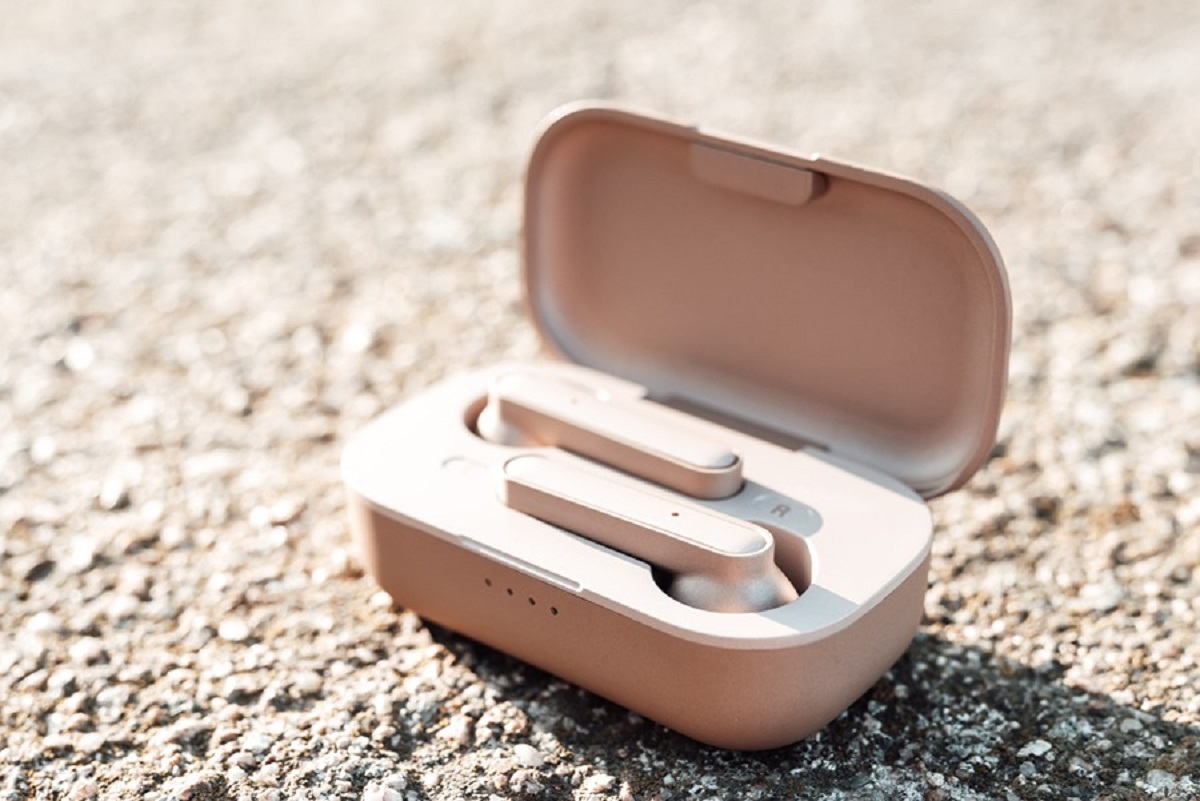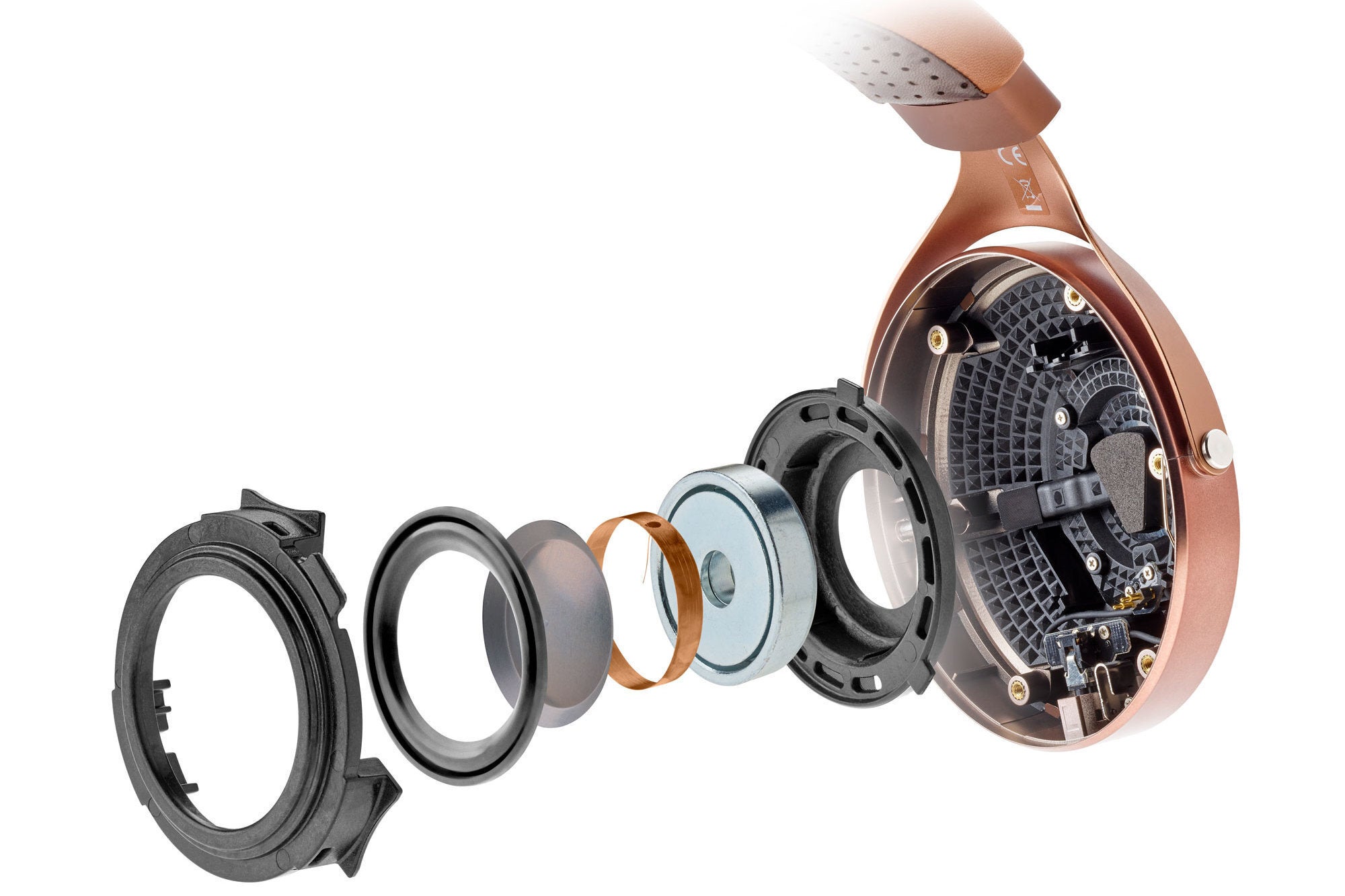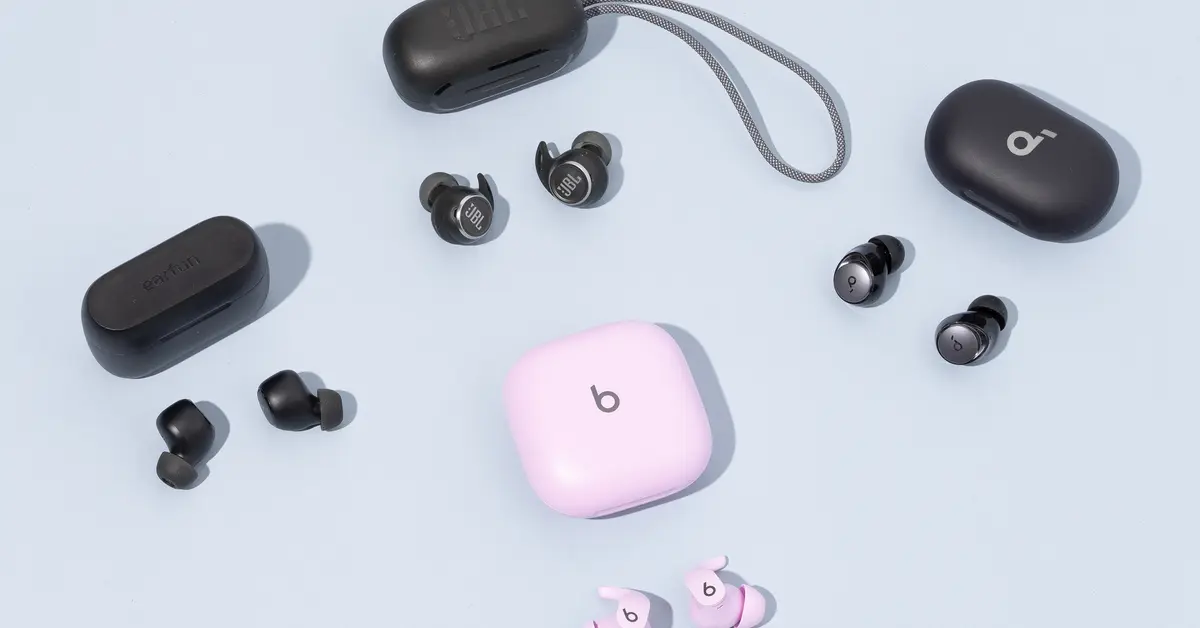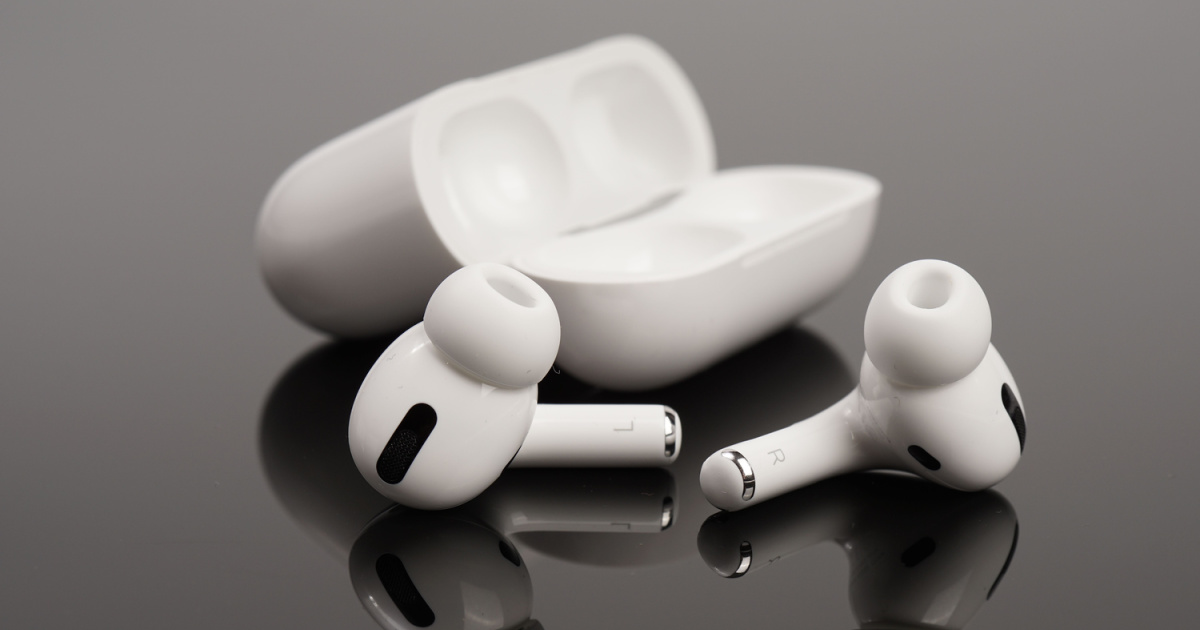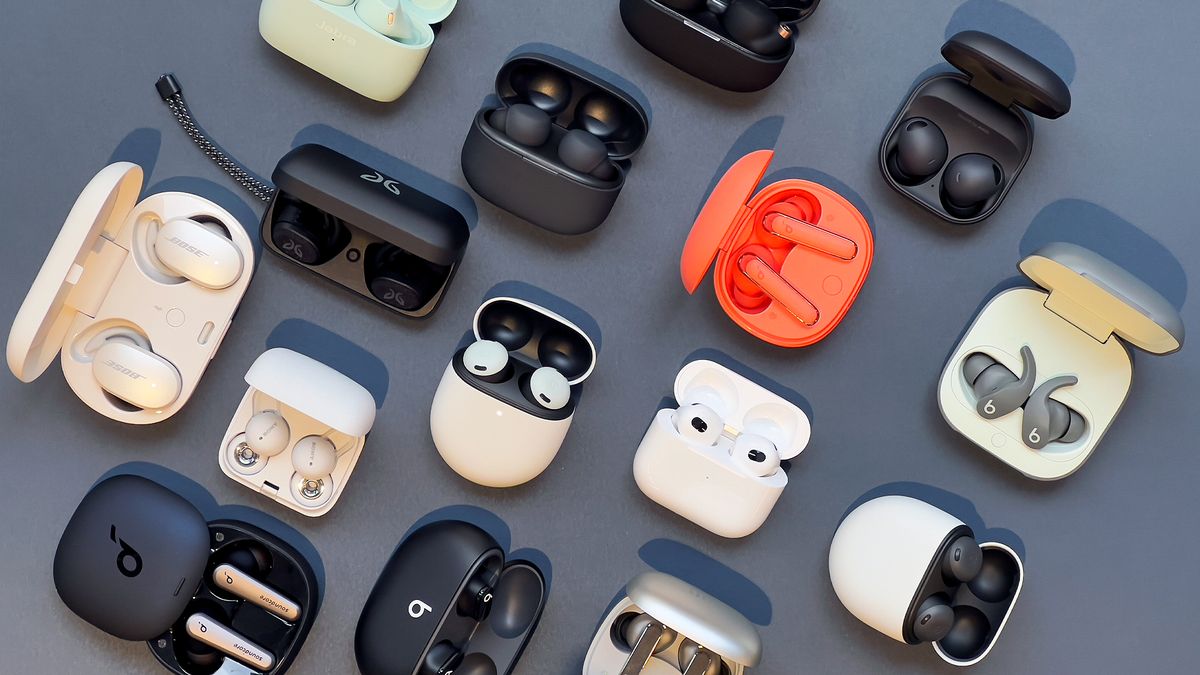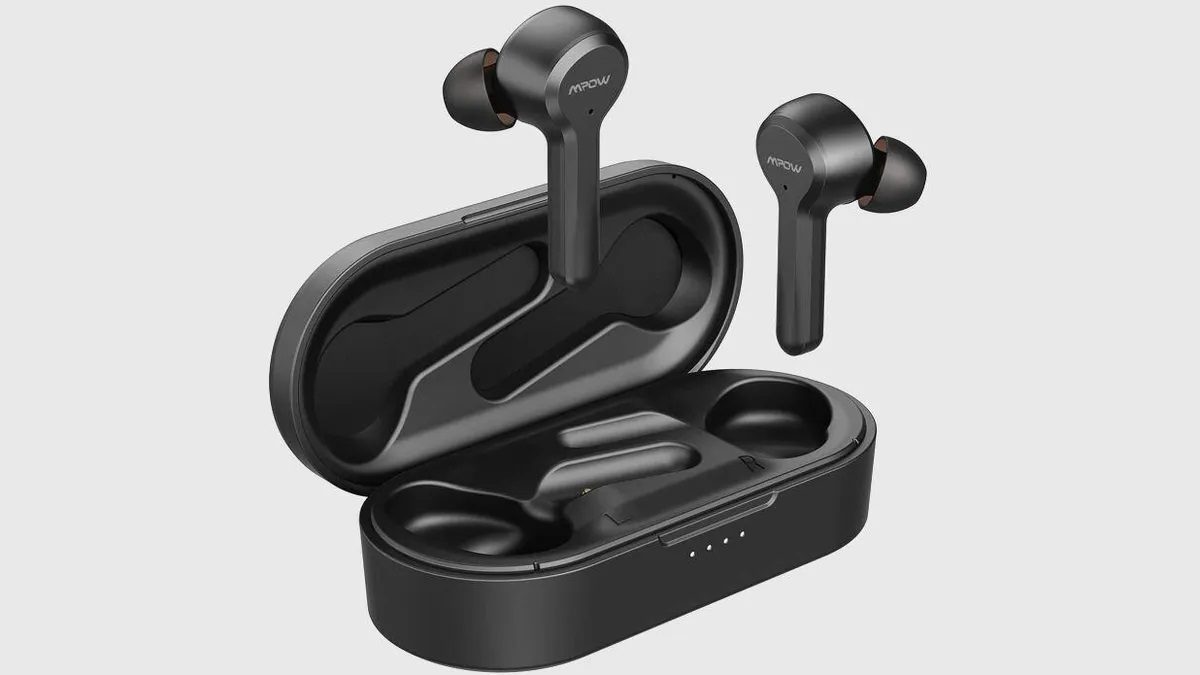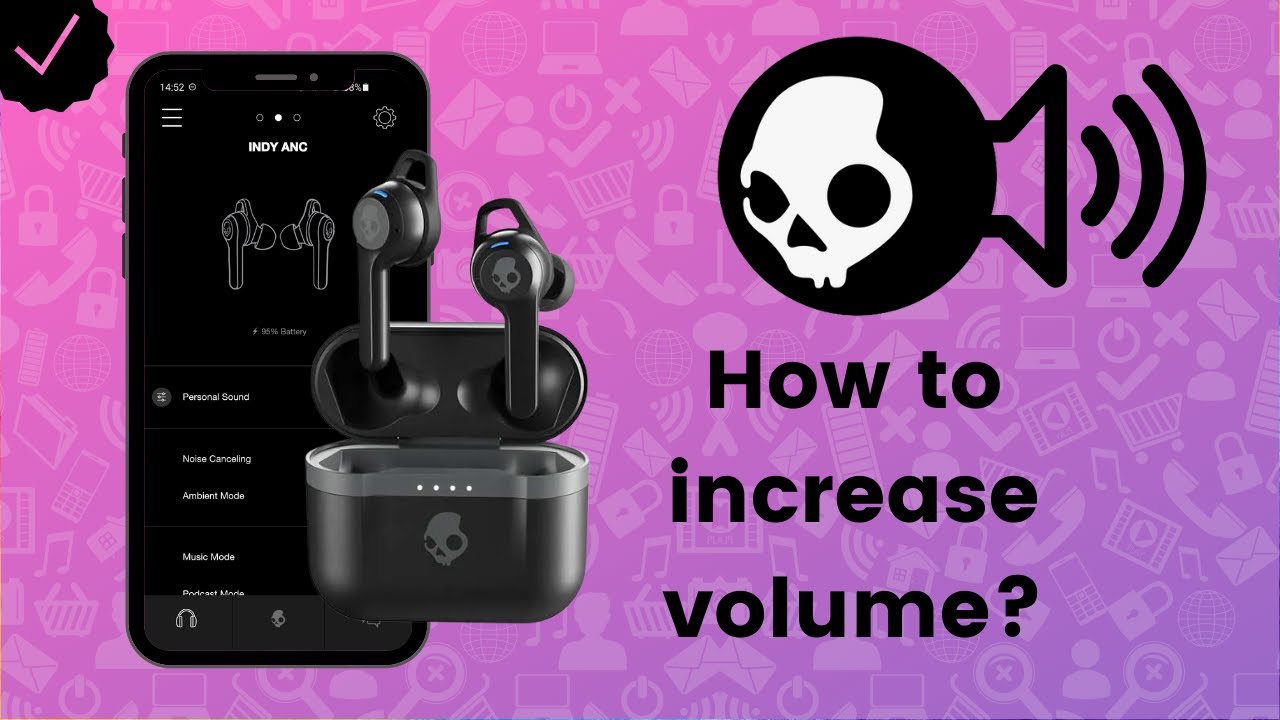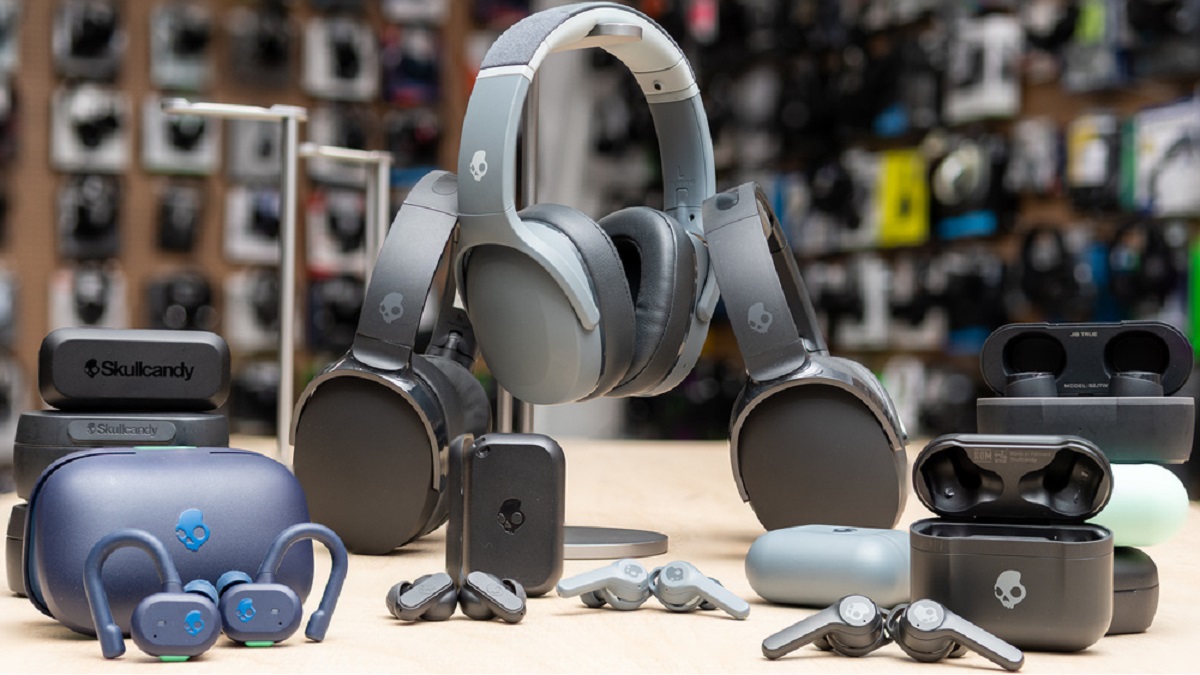Introduction
Do you ever wonder why one of your wireless earbuds is louder than the other? It can be quite frustrating when you’re listening to your favorite music or watching a movie, and the sound is unbalanced. This issue not only affects the overall audio experience but also makes it difficult to fully enjoy the content.
In this article, we will explore the possible reasons behind the imbalance in sound between wireless earbuds and discuss how you can fix this issue. Understanding these causes will help you troubleshoot and resolve the problem, ensuring that both earbuds deliver equal sound quality.
Wireless earbuds have become increasingly popular due to their convenience and portability. However, like any electronic device, they can encounter issues from time to time. One such issue is the disparity in sound volume between the left and right earbuds. While it may seem like a random occurrence, there are specific factors that contribute to this imbalance.
By identifying the root cause of the problem, you can take the necessary steps to rectify it and restore the audio balance in your wireless earbuds. So, let’s dive into the possible reasons for the discrepancy and explore the solutions that can help you enjoy a harmonious audio experience.
Understanding the Issue
Before we delve into the various causes and solutions, it’s important to have a clear understanding of the issue at hand. When we talk about an imbalance in sound between wireless earbuds, it refers to a situation where one earbud produces noticeably louder audio than the other. This can be perceived as a significant difference in volume, making it challenging to enjoy audio content with proper synchronization.
The imbalance can occur in either the left or right earbud, and it can happen with different models and brands of wireless earbuds. Some users may notice this issue right out of the box, while others may experience it after using the earbuds for a certain period of time.
It’s essential to differentiate between true audio imbalance and the perception of imbalance due to our own hearing differences. Sometimes, our ears can perceive sound differently, resulting in the misconception that one earbud is louder than the other. To rule out any subjective biases, it’s recommended to test the earbuds using various audio sources and with different individuals.
Additionally, it’s important to note that not all wireless earbuds are created equal. Some models may have slight variations in sound levels between the left and right channels, even when functioning correctly. This is known as channel imbalance, and it’s a manufacturing limitation that can’t be entirely eliminated. However, the focus of this article is on addressing significant imbalances that impact the overall listening experience.
Now that we have a clearer grasp of what the issue entails, let’s explore the potential causes behind the imbalanced sound in wireless earbuds and how we can go about fixing them.
Causes of Imbalanced Sound in Wireless Earbuds
When it comes to imbalanced sound in wireless earbuds, several factors can contribute to the issue. Understanding these causes will help us troubleshoot and resolve the problem effectively. Let’s explore some of the common culprits:
- Volume imbalance settings: One of the potential causes of imbalanced sound is incorrect volume settings on the device or earbuds themselves. Ensure that both earbuds are set to the same volume level to eliminate any variations.
- Earwax buildup: Over time, earwax can accumulate in the earbuds, leading to a blockage that affects sound transmission. Clean the earbuds regularly to prevent this buildup and restore balanced sound.
- Bluetooth connectivity issues: Sometimes, inconsistencies in the Bluetooth connection can result in differences in sound between the earbuds. Ensure a stable and strong connection between the device and the earbuds to avoid any disruptions.
- Hardware problems: Defective hardware components, such as drivers or amplifiers, can cause imbalances in sound. Check for any visible damage or malfunctioning parts that might be contributing to the issue.
- Audio source or file issue: The audio source or file being played may have imbalances in its audio channels. Test your wireless earbuds with different audio sources to determine if the problem persists across various files.
By identifying and addressing these causes, we can take the necessary steps to rectify the imbalanced sound issue in wireless earbuds. In the following sections, we will discuss various methods and solutions that can help restore audio balance and improve your overall listening experience.
Volume Imbalance Settings
One of the most common reasons for imbalanced sound in wireless earbuds is incorrect volume settings. It’s essential to ensure that both earbuds are set to the same volume level to eliminate any disparities.
Start by checking the volume settings on your device. Adjust the volume to a level that is comfortable for you. Some devices have separate volume controls for media and in-call audio, so make sure to adjust both accordingly.
Next, check the volume settings on each earbud. Some wireless earbuds come with individual volume control options for each side. If this is the case, ensure that the volume levels are matched on both earbuds. You can do this by using the controls on the earbuds themselves or through the companion app if one is available.
If you’re unable to find individual volume control options for each earbud, try resetting the earbuds to their default settings. This can help eliminate any software-related issues that might be causing volume imbalances.
Once you have adjusted the volume settings on both your device and earbuds, test them by playing audio with a balanced sound source. If the sound is still imbalanced, move on to the next solution to address the potential causes.
Remember, volume imbalance settings can often be the simplest fix for imbalanced sound in wireless earbuds. However, if the issue persists, it’s important to explore other possible causes and solutions to resolve the problem effectively.
Earwax Buildup
Another common cause of imbalanced sound in wireless earbuds is the accumulation of earwax. Over time, earwax can collect in the earbuds, leading to blockages that affect the transmission of sound.
To address this issue, it’s important to regularly clean your earbuds. Begin by gently removing the silicone or foam ear tips from the earbuds. These can usually be detached easily, allowing you to access the speaker or driver unit.
Using a soft, dry cloth or a small brush, carefully wipe away any visible earwax or debris from the ear tips, as well as the speaker area. Be gentle to avoid damaging any delicate parts. Avoid using liquid solvents, as they can potentially damage the earbuds.
If the ear tips are removable and washable, you can also clean them with warm water and a mild soap. Ensure that they are completely dry before reattaching them to the earbuds.
Additionally, if your wireless earbuds come with filters or mesh coverings, check for any wax buildup or clogs. These components help protect the internal parts of the earbuds from debris. Use a small toothbrush or a clean, dry cloth to remove any accumulated earwax from the filters.
Regular cleaning of your wireless earbuds will not only help restore balanced sound but also ensure optimal hygiene and longevity of your audio device.
If cleaning the earbuds does not resolve the sound imbalance issue, proceed to the next solution to investigate further potential causes.
Bluetooth Connectivity Issues
Problems with the Bluetooth connection between your device and your wireless earbuds can also contribute to an imbalanced sound experience. Inconsistent or weak Bluetooth connectivity can cause differences in sound between the earbuds.
To address Bluetooth connectivity issues, follow these steps:
- Ensure proximity: Make sure that your device is in close proximity to the wireless earbuds. Bluetooth signals have a limited range, and obstructions such as walls or other electronic devices can weaken the connection. Keep your device and earbuds within the recommended range for the best signal strength.
- Remove interference: Minimize potential sources of interference, such as other Bluetooth devices or Wi-Fi routers operating on the same frequency. These can disrupt the Bluetooth connection and affect the sound quality. Moving away from these sources or disabling them temporarily can improve the connection.
- Reset Bluetooth connections: Sometimes, the Bluetooth connection between your device and your earbuds can become unstable. Toggle the Bluetooth functionality off and then back on both your device and your earbuds. This can help reset the connection and resolve any temporary issues.
- Unpair and re-pair your earbuds: If the connection problem persists, unpair your earbuds from your device and re-establish the connection. Consult the user manual or the manufacturer’s website for specific instructions on how to unpair and pair your particular earbud model.
- Update firmware: Check if there are any firmware updates available for your wireless earbuds. Manufacturers often release firmware updates to address connectivity issues and improve overall performance. Install any available updates to ensure you’re running the latest software version.
By following these steps, you can troubleshoot Bluetooth connectivity issues and potentially resolve the imbalanced sound problem. If the issue persists, there may be other underlying causes to consider, which will be discussed in the upcoming solutions.
Hardware Problems
In some cases, imbalanced sound in wireless earbuds may be caused by hardware issues. Defective or damaged hardware components within the earbuds can affect the audio output, leading to a noticeable difference in volume between the left and right earbuds.
To determine if hardware problems are the cause of the imbalanced sound, inspect the earbuds for any visible damage or signs of malfunction. Check for loose connections, frayed cables, or any physical defects that might affect the audio performance.
If you notice any issues with the exterior of the earbuds, contact the manufacturer’s customer support for assistance. They may provide troubleshooting steps or offer a repair or replacement, especially if your earbuds are still under warranty.
In addition to external damage, hardware problems can also arise from internal components such as drivers or amplifiers. These parts are responsible for producing sound and can malfunction over time or due to manufacturing defects.
Unfortunately, there is limited troubleshooting for hardware-related problems that can be done by the user. In such cases, it is recommended to reach out to the manufacturer or a professional technician for further examination and repair of the earbuds.
Keep in mind that hardware problems are less common compared to other causes mentioned earlier. However, it’s important to rule out any potential hardware issues if the imbalanced sound persists despite trying other solutions.
Now that we have explored the possibility of hardware problems, let’s move on to the next solution to address other potential causes of imbalanced sound.
Audio Source or File Issue
Another factor to consider when experiencing imbalanced sound in wireless earbuds is the audio source or file being played. Sometimes, the imbalance may not be a result of a problem with the earbuds themselves but rather with the audio content.
Before assuming that there is an issue with your earbuds, try playing different audio sources or files to see if the imbalance is consistent. Switch to a different music streaming service, play a different song, or try watching a video from a different platform. This will help determine if the problem lies with the specific source or file.
It’s also worth checking the audio settings of the device or application you’re using. Some audio players offer customizable settings that can unintentionally cause volume imbalances. Ensure that any equalizer, sound enhancement, or balancing options are set to neutral or default values.
If you consistently experience imbalanced sound across various audio sources and files, it’s possible that the audio file itself has imbalances in its channels. Some audio recordings may have been mixed or encoded improperly, resulting in unequal sound distribution.
In such cases, there is little that can be done to fix the audio imbalance on the earbuds’ end. You may want to consider accessing alternative versions of the audio source or consulting the content provider for assistance.
By exploring different audio sources and adjusting the settings, you can determine if the imbalanced sound is due to the specific audio source or file. If the issue persists even with different sources or files, it’s time to move on to the next section to explore potential solutions for restoring audio balance.
Fixing the Imbalance Issue
Now that we have explored the potential causes of imbalanced sound in wireless earbuds, it’s time to discuss the solutions that can help address and fix this issue. Below are some effective methods to restore audio balance:
- Resetting the earbuds: Resetting your wireless earbuds to their default settings can help resolve any software-related issues that might be causing the sound imbalance. Refer to the user manual or the manufacturer’s website for instructions on how to reset your specific earbud model.
- Cleaning the earbuds: Regularly cleaning your earbuds can help remove earwax buildup and ensure optimal sound transmission. Gently wipe the earbuds with a soft, dry cloth and clean the ear tips using a mild soap and warm water if they are washable.
- Ensuring proper Bluetooth connectivity: Maintain a stable Bluetooth connection between your device and the earbuds by keeping them in close proximity, removing potential sources of interference, and resetting the Bluetooth connection if necessary.
- Updating firmware or software: Check if there are any firmware updates available for your wireless earbuds. Installing the latest firmware or software updates can address connectivity issues and improve overall performance.
- Checking for hardware damage: Inspect the earbuds for any visible damage or malfunctioning parts. If you suspect hardware issues, contact the manufacturer’s customer support for assistance or consult a professional technician if necessary.
It’s important to note that these solutions may vary depending on the specific model and brand of your wireless earbuds. Always refer to the user manual or consult the manufacturer’s website for detailed instructions and guidance.
Remember to test your earbuds after each troubleshooting step to determine if the sound imbalance has been resolved. If the issue persists, it may be necessary to seek further assistance from the manufacturer or explore other avenues for a solution.
By following these recommended solutions, you can increase the chances of restoring audio balance in your wireless earbuds and enjoy a more immersive and enjoyable listening experience.
Resetting the Earbuds
If you’re experiencing imbalanced sound in your wireless earbuds, one of the first steps to try is resetting the earbuds. Resetting can help resolve any software-related issues that may be causing the sound imbalance.
The process of resetting varies depending on the brand and model of your earbuds, so it’s crucial to consult the user manual or the manufacturer’s website for specific instructions. However, the general steps for resetting wireless earbuds are as follows:
- Put the earbuds in the charging case: Place both earbuds back into the charging case and ensure they are properly seated and connected to the charging pins.
- Keep the earbuds in the case for a specified time: Manufacturers typically recommend leaving the earbuds in the charging case for a certain duration to complete the reset process. This duration can vary, so refer to the user manual for the recommended time frame.
- Remove the earbuds from the case: After the specified time has elapsed, remove the earbuds from the charging case.
- Re-pair the earbuds with your device: Once the earbuds have been reset, you will need to re-pair them with your device. Follow the initial pairing instructions for your specific earbud model to establish a new connection.
Resetting the earbuds can help resolve any temporary glitches or software issues that may be causing the imbalanced sound. It essentially restores the earbuds to their default settings, eliminating any customized configurations that might have contributed to the issue.
After resetting the earbuds, test them with different audio sources to check if the sound imbalance has been resolved. If the problem persists, proceed to the next solution to further troubleshoot and address the issue.
Remember to consult the user manual or the manufacturer’s website for specific instructions on how to reset your particular earbud model. Following the recommended steps will ensure a proper reset and increase the likelihood of resolving the imbalanced sound in your wireless earbuds.
Cleaning the Earbuds
Regularly cleaning your wireless earbuds is essential for maintaining optimal sound quality and addressing imbalanced sound issues. Earwax buildup or dirt can obstruct sound transmission, resulting in differences in volume between the earbuds.
Here are some steps to effectively clean your earbuds:
- Remove the ear tips: Start by gently removing the ear tips from the earbuds. Most earbuds have detachable ear tips that can be easily removed for cleaning.
- Inspect for debris: Check the ear tips and the speaker or driver unit for any visible debris or earwax buildup. Use a soft, dry cloth or a small brush to remove any particles or dirt.
- Clean the ear tips: If the ear tips are washable, you can clean them with warm water and a mild soap. Gently rub them to remove any dirt or oils, then rinse thoroughly. Ensure that the ear tips are completely dry before reattaching them to the earbuds.
- Wipe the earbuds: Use a soft, dry cloth to wipe the exterior surfaces of the earbuds, including the speaker area. Be gentle to avoid any damage to the earbuds.
- Clean the filters (if applicable): Some earbuds have filters or mesh coverings that protect the internal components. Check for any earwax or debris buildup on these filters and clean them using a small toothbrush or a clean, dry cloth.
Regular cleaning of your earbuds will help maintain optimal sound performance and prevent sound imbalances. By removing earwax and debris, you ensure clear sound transmission and eliminate any potential blockages that could affect the volume or quality of the audio.
Remember to follow the manufacturer’s guidelines regarding cleaning and maintenance to avoid damaging the earbuds. If the imbalanced sound issue persists after cleaning, move on to the next solution to further troubleshoot the possible causes.
Keeping your earbuds clean not only helps resolve sound imbalance but also promotes better hygiene and extends the lifespan of your wireless earbuds.
Ensuring Proper Bluetooth Connectivity
When experiencing imbalanced sound in wireless earbuds, it is crucial to investigate the Bluetooth connectivity between the earbuds and your device. Inconsistent or weak Bluetooth connections can result in sound differences between the earbuds.
Here are some steps to ensure proper Bluetooth connectivity:
- Proximity: Keep your device and earbuds within close proximity to establish a strong Bluetooth connection. Bluetooth signals have a limited range, and obstructions like walls or other electronic devices can weaken the connection.
- Remove interference: Minimize potential sources of interference that can disrupt the Bluetooth connection. Other Bluetooth devices and Wi-Fi routers operating on the same frequency can interfere with the signal. Move away from these sources or temporarily disable them to improve the connection.
- Toggle Bluetooth off and on: If the Bluetooth connection seems unstable, try turning off Bluetooth on both your device and earbuds. After a few seconds, turn it back on. This process can help reset the Bluetooth connection and resolve temporary issues.
- Unpair and re-pair: If the connection problems persist, unpair your earbuds from your device and then re-pair them. This process may vary depending on the device and earbud model, so consult the user manual or the manufacturer’s website for specific instructions.
- Update firmware: Check if there are any firmware updates available for your wireless earbuds. Manufacturers often release updates that address connectivity issues and enhance performance. Install any available updates to ensure you have the latest software version.
By following these steps, you can troubleshoot and fix Bluetooth connectivity issues that contribute to imbalanced sound in your wireless earbuds. A stable and robust Bluetooth connection is vital for consistent and synchronized audio playback.
Remember to test the earbuds with different audio sources after ensuring proper Bluetooth connectivity. If the imbalanced sound issue persists, move on to the next solution to further investigate and resolve potential causes.
Establishing and maintaining a solid Bluetooth connection will not only help resolve sound imbalances but also improve the overall performance and reliability of your wireless earbuds.
Updating Firmware or Software
Keeping your wireless earbuds up to date with the latest firmware or software is essential for optimal performance. Outdated firmware or software can contribute to imbalanced sound or connectivity issues. Updating the firmware can help address these issues and improve overall functionality.
To update the firmware or software of your wireless earbuds, follow these steps:
- Check for updates: Visit the manufacturer’s website or the companion app for your earbuds to check if there are any available updates. Manufacturers often provide firmware updates to resolve known issues, enhance performance, and introduce new features.
- Download and install: If an update is available, download the firmware or software package provided by the manufacturer. Follow the instructions provided with the update to install it on your device or earbuds. Make sure to follow the update process carefully to avoid any potential issues.
- Allow time for the update: Firmware updates may take some time to install. Follow the recommended instructions and allow the update process to complete without interruption. It is imperative not to disconnect or power off the earbuds or the device during the update to prevent any potential errors or firmware corruption.
- Verify the update: After the update is complete, verify that the firmware or software has been successfully installed. Check the manufacturer’s website or the companion app for your earbuds to confirm the latest version number.
Regularly updating the firmware or software of your wireless earbuds ensures that you have the latest improvements and bug fixes. This can address potential issues that may cause imbalanced sound and enhance overall stability and performance.
If you are unsure about the update process or encounter any difficulties, consider reaching out to the manufacturer’s customer support for assistance. They can provide guidance and ensure a smooth update experience.
By keeping your earbuds up to date, you can minimize the chances of imbalanced sound due to firmware or software-related issues. If the sound imbalance persists even after updating, proceed to the next solution to further troubleshoot the problem.
Checking for Hardware Damage
If you’re still experiencing imbalanced sound in your wireless earbuds despite trying the previous solutions, it’s essential to investigate the possibility of hardware damage. Defective or damaged hardware components within the earbuds can cause differences in volume between the left and right earbuds.
Here are some steps to check for hardware damage:
- Visual inspection: Carefully examine the earbuds for any visible damage. Look for signs of physical wear and tear, loose connections, or frayed cables. Pay attention to the speaker areas, as any damage or debris that has accumulated around them can affect sound quality.
- Testing with another device: Try connecting your earbuds to a different device to see if the sound imbalance persists. This can help determine if the issue is specific to your device or the earbuds themselves.
- Testing with different audio sources: Play audio from various sources, such as music apps, videos, or podcasts, to assess if the sound imbalance occurs across all sources. If the imbalance is consistent regardless of the audio source, it suggests a hardware issue within the earbuds.
- Contacting customer support: If you suspect hardware damage, reach out to the manufacturer’s customer support for assistance. Explain the issue and provide any relevant information. They may provide troubleshooting steps or offer repair or replacement options, especially if your earbuds are still under warranty.
It’s important to note that hardware problems are relatively rare compared to other causes. However, if you have ruled out other potential causes and suspect hardware damage, it’s crucial to seek professional assistance or contact the manufacturer for further guidance.
By inspecting for hardware damage, you can address any physical issues that might be causing the imbalanced sound. If the issue persists after investigating hardware-related factors, proceed to explore additional troubleshooting options to find a resolution.
Conclusion
Imbalanced sound in wireless earbuds can be frustrating, but with the right troubleshooting steps, you can address the issue and restore audio balance. By understanding the possible causes, you can apply the appropriate solutions to resolve the problem.
Throughout this article, we have explored various factors that can contribute to imbalanced sound, including volume imbalance settings, earwax buildup, Bluetooth connectivity issues, hardware problems, and audio source or file issues.
To fix the imbalanced sound, we recommend trying the following solutions:
- Resetting the earbuds to their default settings, eliminating software-related issues.
- Cleaning the earbuds to remove earwax buildup and ensure clear sound transmission.
- Ensuring proper Bluetooth connectivity by maintaining proximity, removing interference, and updating firmware.
- Updating the firmware or software of your earbuds to address potential compatibility or performance issues.
- Checking for hardware damage by visually inspecting the earbuds and testing them with different devices and audio sources.
Remember to consult the user manual or the manufacturer’s website for detailed instructions specific to your earbud model. If the imbalanced sound persists despite exhausting all the troubleshooting steps, it is advisable to contact the manufacturer’s customer support for further assistance.
Ensuring optimal audio quality is vital for an enjoyable listening experience. By implementing these solutions, you can significantly improve the sound balance in your wireless earbuds and immerse yourself in the audio content with accurate and synchronized sound.
Remember, different earbud models may have varying solutions, so it’s crucial to refer to the specific guidelines provided by the manufacturer. With patience and persistence, you can troubleshoot and resolve imbalanced sound issues, allowing you to fully enjoy your wireless earbuds once again.







